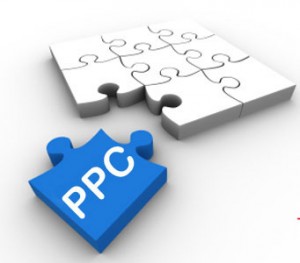3 Foundational PPC Management Strategies for Ecommerce Sites
Ecommerce PPC management is often a complex and cumbersome undertaking. Unless you’re using PPC management software that streamlines various tasks and processes, you have to understand the intricacies of the advertising platform (namely “Google AdWords.”) 
Even if you are using software for ecommerce PPC management, these strategies still apply. Below are three foundational PPC management strategies for ecommerce sites.
Focal Ad Grouping
The ad groups within your ecommerce PPC campaign will often perform better with very tight and focused keyword groupings. That is, instead of having one ad group that contains 50 keywords, segment that ad group into ten ad groups with only 5 keywords in each.
In short, if you have too many keywords in one ad group, it makes it difficult to create relevant ads around all those keywords. With more narrow, keyword-focused ad groups, you can create highly targeted ad groups.
Execute Peel n’ Stick When Necessary
If you find ad groups with an abundance of slightly unrelated keywords, the you can implement the Peel n’ Stick strategy, a profoundly effective strategy that is mentioned in the this PPC training course by a learning platform called Yisoo. This strategy is paramount for ongoing ecommerce PPC management.
The peel n’ stick focuses on pinpointing poor performing keywords and putting them other more relevant ad groups, or creating new dedicated ad groups. Often times you can find these problematic keywords by looking at quality score. Low quality score is often an indicator of keywords that can use peel n’ stick.
Again, the idea is focal ad grouping with very similar and relevant keywords. Even if keywords are synonymous, but have different spelling or semantics – create new ad group!
Effective Ad Copywriting & Diligent Split-Testing
Ad copy is a critical aspect of managing an ecommerce PPC campaign. Ad copy can influence keyword quality score as well as your ad’s click-through rate or “CTR”. For this reason, it’s important that you diligently split-test multiple ads per each ad group.
Below are the pillars of writing effective ads for search:
- Offer – what is it (the specific product) that you’re offering in the ad?
- Value – what makes buying for your online store unique, beneficial, or advantageous?
- Proposition – what form of action or perceived response can the buy expect when visiting your site?
The “offer” usually pretty obvious: make sure to mention the product you’re selling, ideally in the ad’s headline and perhaps again in the supportive copy.
The “value” is your differentiator – what separates you from the competition? Do you have anything exclusive or incentivizing to pitch?
The “proposition” flows with your value, but is simply the call-to-action that promotes it. This is a verb, like “Get Free Shipping…” “Save 15%…” or “Shop This Weekend…”
Split-Test, Like a Boss
Split testing is the ongoing process behind ecommerce PPC management. Depending on how popular the keywords your bidding on, test 3-6 different ad variations per group. Here you can get creative and play with the three latter pillars, as well as other ad elements, like the URL and Dynamic Keyword Insertion.
After your split-tests have earned enough impressions (or have earned “statistical relevancy,”) you can then start looking at which ad copy is getting the highest CTR’s and conversions. Keep the momentum going by dovetailing on what’s working, but never stop split-testing.
Optimize Keyword Bidding
Another essential role to ecommerce PPC management is optimizing keyword bids. “Optimize keyword bids,” you might say?
Yes. In many cases, PPC campaigns are set-up using only broad match bidding (purely due to unawareness,) and as a result, ads are triggered for distant and often times unwanted keyword variations.
One of the most effective ways to optimize keyword bidding is to use either modified broad match or [exact phrase match]. Exact phrase match will ensure an ad only appears when a users keyword search exactly matches the words inserted between brackets.
However, modified broad match uses a “+” symbol in front of the words that must be used in the keyword query, but also include some variation.
For example, if we bid on the keyword phrase +boys +oshkosh +jeans, then our ad will be shown for keyword queries for “boys oshkosh jeans size 8” and “oshkosh jeans for boys” (not “kids oshkosh jeans” or “boys oshkosh pants”.)
Using modified broad match bidding can help to ensure that ads are displayed for long-tail keyword queries, but still relevant to your target audience. This, in accordance with exact phrase match bidding, can result in more efficient use of ad spend.



